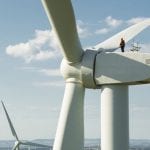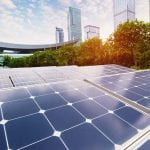Around The Web
Sydney desalination plant to double in size as dams approach critical level
Exclusive: top water bureaucrat says planning has begun for plant to move from producing 15% of water to 30%
Sydney’s desalination plant will double in size as the city’s water supply approaches the critical threshold in dam levels.
The top bureaucrat who oversees water in the NSW Department of Planning, Industry and Environment, Jim Bentley, told a Committee for the Economic Development of Australia (Ceda) lunch in Sydney, that planning for the expansion had now begun.
Continue reading...Greta Thunberg's 495-word UN speech points us to a future of hope – or despair
The speech draws the battle lines between those of us who want action on climate change and those, like Trump, who only mock it
- Support our independent journalism with a one-off or recurring contribution
Greta Thunberg’s address to the UN’s Climate Action Summit on Monday may well prove to be the climate change movement’s Gettysburg Address. Like Abraham Lincoln’s revered speech, which ran to 273 words, Thunberg’s was also very short, only 495 words long.
Lincoln famously spoke at the dedication of the Gettysburg Cemetery, following the leading orator of the day, Edward Everett, who took two hours to deliver the official address, a 13,000 word oration. Lincoln’s speech, simply described in the day’s official program as Dedicatory Remarks, lasted less than three minutes.
Continue reading...We must act now to protect our threatened oceans | Letter
Last week, climate strikers young and old came out in force calling upon the government to act with greater urgency in tackling the global climate emergency.
Their demands should be emboldened by the stark findings of the special report on the ocean and cryosphere in a changing climate, released on Wednesday by the International Panel on Climate Change. The report highlights the intimate connection between our climate, our oceans and our very existence. It presents irrefutable scientific evidence that our warming climate is placing marine and frozen areas of our planet in grave danger, with some changes happening at a much larger scale and faster rate than previously predicted.
Continue reading...Prehistoric babies fed animal milk in bottles
‘I’m not getting much Take a Break’: Extinction Rebellion’s newspaper, reviewed
The climate activists release their first print publication this week. But does a crisis-hit planet make for winning journalism?
In a move that feels more than slightly ironic, the climate activists Extinction Rebellion have decided to go into a media on the brink of extinction, having released their first newspaper this week. It is called the Hourglass, because time is running out – and because the XR logo kind of looks like one, in the right light – and comes with the strapline: “Rigorous journalism for fragile times”. More than 110,000 copies will be distributed, printed on paper made from freshly felled Amazonian trees … No, of course not, it’s recycled, most probably from litter picked up from events that didn’t even have anything to do with Extinction Rebellion, but which they attended to pick up litter because they’re better people than the rest of us.
According to a press release, readers can expect stories similar to those of “a mainstream newspaper like the Metro while at times hitting the tone of Take a Break”. “I never knew I had a twin sister until we chained ourselves to the same pink boat in Oxford Circus,” perhaps?
Continue reading...Mont Blanc glacier in danger of collapse, experts warn
Italian mayor orders roads closed and homes evacuated over fears ice will break away
Italian authorities have closed off roads and evacuated homes after experts warned that a portion of a Mont Blanc glacier is at risk of collapse.
Stefano Miserocchi, the mayor of the town of Courmayeur, said “public safety is a priority” after experts from the Fondazione Montagna Sicura (Safe Mountains Foundation) in the Aosta Valley said up to 250,000 cubic metres of ice was in danger of sliding off the Planpincieux glacier on the Grandes Jorasses peak.
Continue reading...New South Wales coal mine ruling could spur offset interest
EU Midday Market Brief
IHS Markit launches global carbon index amid growing investor interest
SK Market: KAUs fly through $30 as compliance pressure intensifies
View from The Hill: What might Lily and Abbey say to Scott Morrison about Greta Thunberg?
Mont Blanc: Glacier in danger of collapse, experts warn
Extreme sea level events ‘will hit once a year by 2050’
Climate report says intense storms and loss of marine life are already inevitable
Extreme sea level events that used to occur once a century will strike every year on many coasts by 2050, no matter whether climate heating emissions are curbed or not, according to a landmark report by the world’s scientists.
The stark assessment of the climate crisis in the world’s oceans and ice caps concludes that many serious impacts are already inevitable, from more intense storms to melting permafrost and dwindling marine life.
Continue reading...Climate change severely damaging world's oceans, major new report warns
How to help a child with eco-anxiety
Environmental photographer of the year 2019 winners – in pictures
SL Shanth Kumar has won Ciwem environmental photographer of the year 2019 for his image of homes battered by flooding in Mumbai. This year’s winners were revealed alongside the UN climate summit in New York
Continue reading...1% of English residents take one-fifth of overseas flights, survey shows
FoI request to DfT reveals 10% most frequent flyers took more than half of flights abroad in 2018
Just 1% of English residents are responsible for nearly a fifth of all flights abroad, according to previously unpublished statistics.
The figures, published in a Department for Transport survey, also reveal that the 10% most frequent flyers in England took more than half of all international flights in 2018. However, 48% of the population did not take a single flight abroad in the last year.
Continue reading...Cattle Hill wind farm set to test new eagle protection technology
 New technology designed to protect eagles from being injured or killed by wind turbines farms is ready to be tested at Tasmania’s 144MW Cattle Hill project.
New technology designed to protect eagles from being injured or killed by wind turbines farms is ready to be tested at Tasmania’s 144MW Cattle Hill project.
The post Cattle Hill wind farm set to test new eagle protection technology appeared first on RenewEconomy.
Energy Insiders Podcast: Is this the end of the wind and solar boom
 20 big investors warn that new wind and solar projects won’t go ahead without changes to marginal loss factors process. Group chairman Rob Grant explains why.
20 big investors warn that new wind and solar projects won’t go ahead without changes to marginal loss factors process. Group chairman Rob Grant explains why.
The post Energy Insiders Podcast: Is this the end of the wind and solar boom appeared first on RenewEconomy.
Less than half of Australia’s biggest property companies have zero emissions targets
 ClimateWorks research reveals less than half of Australia's major property companies have emissions targets aligned with Paris, and one in 10 have no targets at all.
ClimateWorks research reveals less than half of Australia's major property companies have emissions targets aligned with Paris, and one in 10 have no targets at all.
The post Less than half of Australia’s biggest property companies have zero emissions targets appeared first on RenewEconomy.



